Memories of the future. Modernization of Atomic Eagles
As in Russia, it has been done for a long time:
So that thieves and thieves do not attack, -
The heroes are entrusted to watch ...
... Today, "Kirov" came to watch!
- the newspaper "On Guard of the Arctic", issue of 19 on April 1981 of the year.
"You look nice" (Zdorovski look)
- semaphore from the British destroyer "Newcastle", watching the transition of the cruiser "Kirov" to the Northern Fleet.
The sea will not go out anymore, there is no trained crew, and at least at least 5 will have to prepare it for years!
- the forecast from Evgeny Zdesenko, the first commander of the heavy nuclear cruiser Frunze, 1993
“In the state defense order there are 5 billion rubles for the modernization of Orlan.” To disclose this article, you must sign the relevant documents. ”
- Anatoly Shlemov, USC official, interview from 1 September 2012.
“A source in the Navy confirmed to Izvestia that the restoration of Admiral Nakhimov was resolved.
According to him, “work will be carried out in the next five years. Then the ship will become part of the North fleet»
- “Izvestia”, news from 2 October 2012
"Not a single document has been signed that defines the order and amount of repair work on the heavy nuclear missile cruiser Admiral Nakhimov."
- News from 9 October of the same year.
The four atomic giants of the 1144 project - the liberal press likes to “wipe their feet” about them, and the British Secretary of Defense every time flew out on a helicopter to admire the Orlans in the ocean.
Currently, the Internet is wandering a lot of shocking "news", the authors of which, without being embarrassed in expressions, criticize the decision to modernize and return to operation the Russian nuclear-powered cruisers, arguing their position with the words "rusty", "old", "unnecessary" and " a lot of money".
I do not set myself large-scale tasks to refute the "yellow press". Firstly, it is not very exciting - such “materials” are replete with a multitude of incorrect facts, and, upon closer examination, are crumbling like card houses. Secondly, everyone has the right to their own opinion. Finally, in the stream of the “yellow press” sometimes there are really important and necessary remarks concerning the concept of using heavy nuclear cruisers under the flag of the Russian Navy.
Today we will try to find and explain the tasks of the Orlans in the modern world, using a simple method — we will study in detail the heavy nuclear missile cruiser of the 1144 project, consider its design and composition of armaments, both before and after possible modernization. And, as a possible result, we define the range of tasks subordinate to the cruiser.
Despite the seeming absurdity of such an approach, this exactly corresponds to the spontaneous concept of creating the Orlans — first a huge ship was built, and then the task was “found” for it. As a result, the fourth and most advanced cruiser of this project - Peter the Great (modification 11442) has on its board almost the entire range weaponsadopted by the Russian Navy!
The most complicated calculations are the lot of large design teams, but we do not pretend to academic accuracy, all the more so the directions for future modernization of the Orlan are quite obvious and have already been announced more than once at the highest level.
Plenty of plans
Admiral Gorshkov wanted to become the Lord of the Five Oceans. For this he would need an atomic squadron with unprecedented combat potential. At the head is the nuclear aircraft carrier Ulyanovsk (in those years, just the 1143.7 project). Escort - heavy atomic "Orlans" and atomic destroyers "Anchar". The super squadron will be able to move across the oceans at a speed inaccessible to ordinary warships and have unlimited autonomy, thanks to integrated supply ships of the Berezina type, capable of transmitting everything to warships, from aviation fuel and provisions to missiles and ammunition.
Alas, the implementation of the ambitious program faced obvious technical and financial difficulties, as a result, the fleet received only four Orlans and one KSS Berezin. "Ulyanovsk" did not have time to build. By the time they were born, TARKRs had already turned into monstrous monsters with a displacement of 26 thousand tons each. In view of the unclear purpose of the cruisers, the designers made a simple decision to install on them the most powerful and perfect weapons available at that time available to the Soviet Navy - “Granites”, C-300, slaughter artillery, air defense missile systems, bombers, helicopters, anti-submarine rocket-tipped ...
Each of the “Orlans” under construction was abruptly different from its predecessor, as a result the first cruiser (Kirov) and the last cruiser (Peter the Great) had so many differences in armament, systems, internal layout and appearance, which we can confidently say about two different projects - 1144 and 11442.
For further consideration, we will select the third building, Admiral Nakhimov (formerly Kalinin), as the most recent of the mothballed Orlans and as the most likely contender for the planned modernization. At the moment it is quietly rusting in Severodvinsk. What fate awaits the nuclear cruiser in the future? What advantages will have a new modification ... let's call it for short 11443.
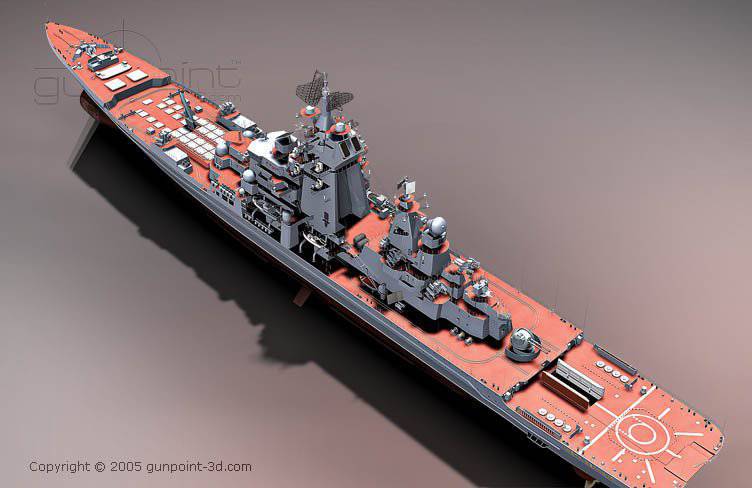
So, the area 10 of the frame (numbered from the nasal tip) - here is installed the 10-charging jet bomber installation "Boa", which is a complex of active anti-torpedo protection. In an automated charging cellar - jet ammunition for various purposes:
- false targets, distracting enemy torpedoes;
- sea mines, triggered by the passage of a torpedo near them;
- in case of breaking through the first two echelons of protection (trap zones and minefield), the usual depth charge bombs are fired upon.
Theoretically, RBU-12000 "Boa" can be used to combat enemy submarines. Finally, in the exotics format, from the RBU it is possible to “plant” bombs on surface and coastal targets located in the affected area of the installation (≈3000 m). An 230-kilogram bomb with an 100-kg explosive charge does not bode well for the enemy. 120 bombs, 10 volleys are more than enough to sink any modern NATO destroyer if necessary.
Future upgrades are unlikely to affect the bow stump of the Torpedo anti-torpedo protection system, the maximum is limited to current repairs and loading of new types of ammunition.
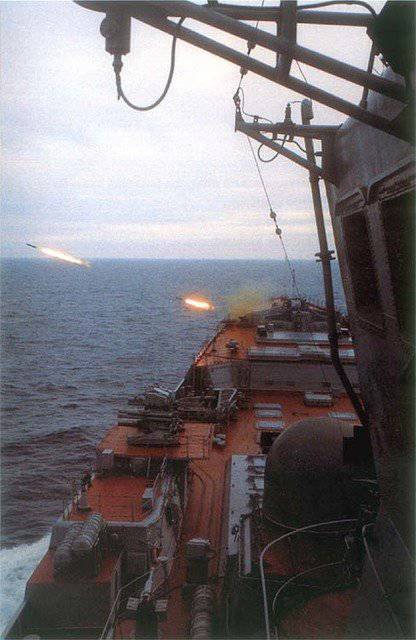
Area 60-th frame - in this place under the upper deck of the "Nakhimov" are reserved rooms for the anti-aircraft missile complex "Dagger". Unfortunately, the new melee air defense system appeared too late and was installed only on Peter the Great. With future upgrades, the vertical launch of the “Dagger” or UVP of the newest maritime air defense system “Polimen-Redut” can fit here.
The space under the upper deck from the 80-th to the 120-th frame is occupied by vertical launchers of the C-300 “Fort” anti-aircraft complex - all 12 of eight-charge drum PUs. At the beginning of 80, when the leading TARKR Kirov reached the sea, not a single warship in the world could compare with the Soviet cruiser in the quality of anti-aircraft defense - 96 anti-aircraft missiles with a range of 75 km left no chance for successful aircraft air attack. To date, despite the emergence of more effective 48H6 missiles with an increased range of fire up to 150 km, the C-300F complex requires replacement with more modern weapons.
The first association, the replacement of the C-300 that occurs with words is an even more formidable C-400 SA-system. However, not everything is so simple - firstly, the C-400 marine modification does not exist. Secondly, the drum launcher proved to be overly complex. Now there has appeared a more efficient Russian maritime air defense system - Polymen-Redut, already mentioned a little earlier. It is this weapon that is the basis of the air defense of the new Russian frigates of the 22350 project.
The “Reduta” feature is the new 9М96Е and 9М96Е2 anti-aircraft missiles with an active homing head (GOS). Without a long and tedious explanation of the features of firing anti-aircraft missiles, I note that an active GOS is a huge step forward compared to all previous developments. Now the enemy aircraft will not be able to escape, even if it goes out of sight of the cruiser radar.
Instead of 12 huge launchers of the complex "Fort" in the nose of "Admiral Nakhimov" can fit 144 installation (cells) of the vertical launch of the "Polyment-Redut" air defense system (of course, this is a purely amateur calculation, based on data from open sources and common sense). Part of the CIP may be occupied by the 9М100 melee missiles (four in each cell), which greatly increases the anti-aircraft ammunition of the upgraded cruiser.
We go further - in the internal space of the body in the area from the 120-th to the 170-th frames is a "super-weapon" - 20 launchers of anti-ship missiles P-700 "Granit". What can you say about the monstrous complex, which received the Shipwreck (“shipwreck”) cipher in the NATO protocols?
Granit was developed a long time ago, but it is still capable of drowning any surface target at a distance of 600 km. There is a possibility of striking radio-contrast objects in the coastal zone. 2,5 sound speed, 750 kg warhead, special flight algorithms and target selection. He is too smart, difficult to detect and difficult to kill. And besides, still armored! The dignity and at the same time the lack of "Granite" is its crazy size: with a length of 10 meters (with a starting accelerator), the rocket weighs 7 tons!
But it is enough to frighten the sailors from the American aircraft carriers - in 30 years, since the appearance of the P-700 in service with the national fleet, they have already managed to put a lot in their pants. It is time to change priorities and give way to more modern and more versatile complexes. The only and adequate replacement for Granite is the universal ship-shooting complex of the UBCS with a family of multi-purpose Caliber rockets. Now the nuclear cruiser of the 11443 project will be able to strike with cruise missiles deep into the land territory, destroying militant bases near Damascus and Aleppo. Shoot the ZM-54 missiles with a detachable warhead at surface targets and reach the submarines in depth using special rocket-torpedoes.
In total, instead of 20, the PU of the Granit complex on the upgraded cruiser can be installed up to the 144 cells of the UKKS. Multipurpose strike ship!
In the area of the 150 th frame, two anti-aircraft batteries of two AK-630 automatic guns were installed on both sides of the cruisers (each shooting rate is 6000 rpm). On the last two corps, the Nakhimov and Peter the Great, they are replaced by the Kortik rocket and artillery systems. Each combat module is a combination of paired 30 mm automatic cannons + 8 self-defense anti-aircraft missiles (general ammunition module 32 SAM). The main advantage of the "Dirk" - guns and guidance systems are mounted on a single mast, which radically improves the accuracy of shooting.
Probably, during the modernization, all the DIRECT "Dirk" will be replaced by the modern Dam "Palash" - even less reaction time, even higher accuracy.
Moving on: the 180 frame, in this place, before the superstructure, retractable girder launchers of the Osa-M anti-aircraft missile systems were located on three cruisers, one for each side (there is no such thing on Peter the Great). Total - two air defense missile systems, two antenna posts, two launchers, general 40 ammunition of rockets. When upgrading, all this equipment is guaranteed to disappear - the Osa-M anti-aircraft complex is outdated and no longer meets modern requirements. Functions "Wasps" completely duplicate the "Dagger" and, in the future, "Polyment-Redut".
A little "walk" on the superstructure of the atomic cruiser "Admiral Nakhimov". Of the most "contrasting" objects in
front end - sticking “tits” of the radar of the ZR-41 “Wave” is the radar of the C-300F’s fire control radar. The system is old and needs to be updated - it’s possible that a powerful ФХNUMXМ radar with a phased antenna array will soon appear in its place, or, if installed on the cruiser Polymer-Redut, it will disappear altogether without a trace.
At the top of the foremast (the first mast from the bow of the ship), tremendous trellis structures rotate - three-coordinate radar for detecting airborne targets “Voskhod” and “Kliver” - this technique requires an early replacement with more modern radars. Purely for comparison: Americans plan to install AMDR super-radars on their Orly Burk destroyers, with 300 times the radiation power of the old Soviet radar systems — such extreme characteristics are required to detect point objects in near-earth orbits.
Slightly lower on the foremast the units of the electronic warfare station “Kantanta-M” are mounted.
Mainmast (second mast, closer to the stern): at the top is the Fregat-MA general detection radar. The situation is similar to air detection radars, urgent replacement is required. Satellite and navigation antennas are also located here - after modernization, GLONASS signals receivers and Liana radio intelligence satellites should appear here - the problem of over-target designation and guidance for a cruiser missile can only be reliably resolved when receiving data from orbit.
Behind the main mast, another “boob” sticks out to highlight targets when firing the C-300F anti-aircraft complex, just below - the “Lion” radar of an artillery fire control system.
On both sides of the mainmast there are four combat modules “Dirk” (two for each side), similar to the two that are installed in the bow of the ship. Slightly lower are the six-barrel rocket-bombing installations RBU-1000 (one on each side).
In the same place there is another “surprise” - latsports (simply sealed hatches) are hidden on the sides of the cruiser for firing torpedoes and anti-submarine missiles of the Vodopad-NK complex. Enchanting weapon! At first, the clanking of the hatch opening was heard, and for an instant a leaping elongated “cigar” flashed, gently falling into the water with savory “plop!”. Then there is a ringing silence ... and nothing happens ... EXTREMELY, behind the stern of the ship (the cruiser has already managed to walk fifty meters), a fire comet flies out of the water with a terrible hiss and disappears into the clouds in a second! Far away astern, a burning stain of fuel remains remained on the surface of the water ... Having flown two dozen miles, the Vodopad-NK rocket-torpedo will again fall into the water, turning this time into a homing torpedo.
Such ammunition aboard the 10 cruiser pieces. Alas, with the advent of the Caliber multi-purpose complex, the Vodopad-NK anti-submarine complex loses its value.
We go further ...
In the aft part of the superstructure a transparent “blister” is visible - a helicopter take-off and landing operations control post. Directly in front of him, even further into the stern is the AK-130 twin-gun X-gun caliber mm. Rate of fire to 130 rds / minute. Firepower, like the 80 guns of the World War II light cruiser. Although the price for this pleasure turned out to be enormous - the mass of the AK-12 and its automated cellars are 130 tons - 102 times as large as the American 4 mm naval gun Mk.127 (45 ... 16 rds / min).
Frankly speaking, the presence of the AK-130 on the cruiser raises many questions: where it is necessary to use artillery (shelling of coastal targets, fire support) - for this AK-130 is too weak (not the right caliber). In other cases, it is not needed.
There are two ways out here: the first is to replace the AK-130 with a more powerful artillery system with a caliber from 152 mm (for example, Coalition-F) during the upgrade. The second will sound somewhat shocking, however, this is slightly lower ...
On the aft of the cruiser "Admiral Nakhimov" is a spacious helipad, at the edges of which reserved space for launchers of self-defense SAM "Dagger" (he, as you remember, was too late, so it was not installed). After upgrading, there may appear 96 installations of the vertical launch of the Polyment-Redut air defense missile system.
Operation of helicopters on the cruiser "Orlan" is like a tense sex life: you are standing on the deck, the helicopter is under your feet. First you need to open the sash of the hangar, then go down under the deck and roll the platform with the 10-ton helicopter onto the lift, fix it, and the next thing is when the helicopter will be on the upper deck it remains to roll it out onto the take-off platform. Remove the helicopter under the deck - all actions in reverse order. There are three helicopters on board the Orlan. And now try to do it in a storm, with a strong rolling!
The people with whom I had the opportunity to communicate offered a simple and, to some extent, ingenious solution - to dismantle the AK-130 gun, and to equip the helicopter hangar in the appeared place, on the same level with the helipad. And forever forget about the hell of a lift.
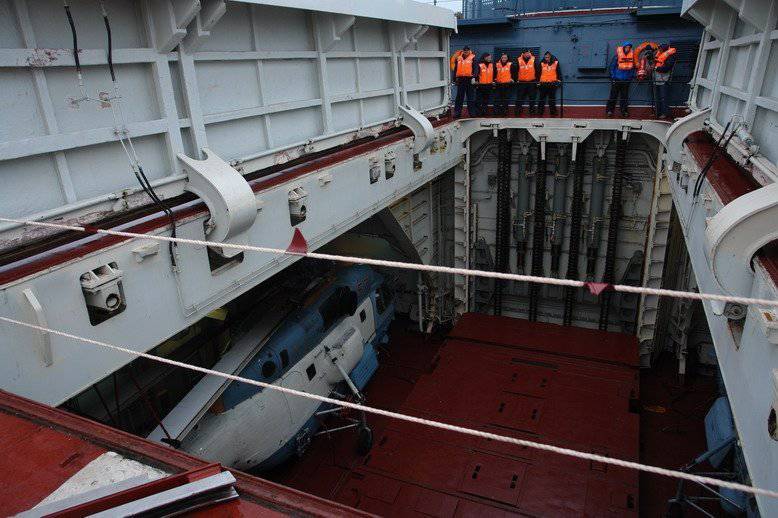
Well, our virtual tour came to an end. “Orlan” is really great: a quarter of a kilometer in length, 20 km of internal corridors, 1600 rooms ... it takes a single day to thoroughly inspect it from the outside and inside. I tried to talk about it in one article. It is a pity that there is not enough time to tell about his amazing sonar station “Polynom” weighing 700 tons or about such useful attributes as a commander boat and cargo arrows on its deck. Not enough time to talk about booking. Another time somewhere in the future somehow another time sometime later…
Pigeons of the world
The former name "Orlans" - "aircraft carrier killers" has become obsolete. Huge nuclear cruisers cease to be combat units and become a means to exert legal political pressure. Constantly on the front lines and “showing the flag”, they will support a positive image of Russia, create the foundations for the formation of coalitions advantageous for us, support our allies morally and serve as a formidable warning to our potential adversaries.
For example, throw a squadron of three “Orlans” anchors in Cuba with a hint of permanent deployment - and we can seriously expect changes in the American rhetoric regarding the deployment of missile defense in Europe. Powerful ships with such a monumental and fierce appearance - an indispensable tool for the peaceful resolution of crises.
Small photo gallery:
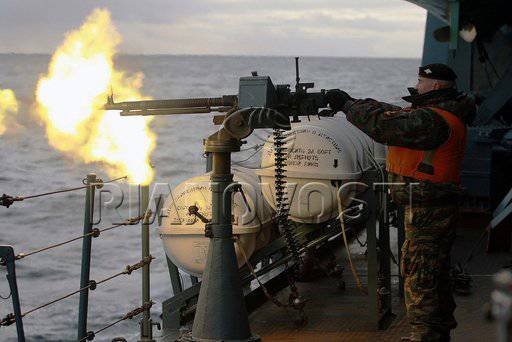
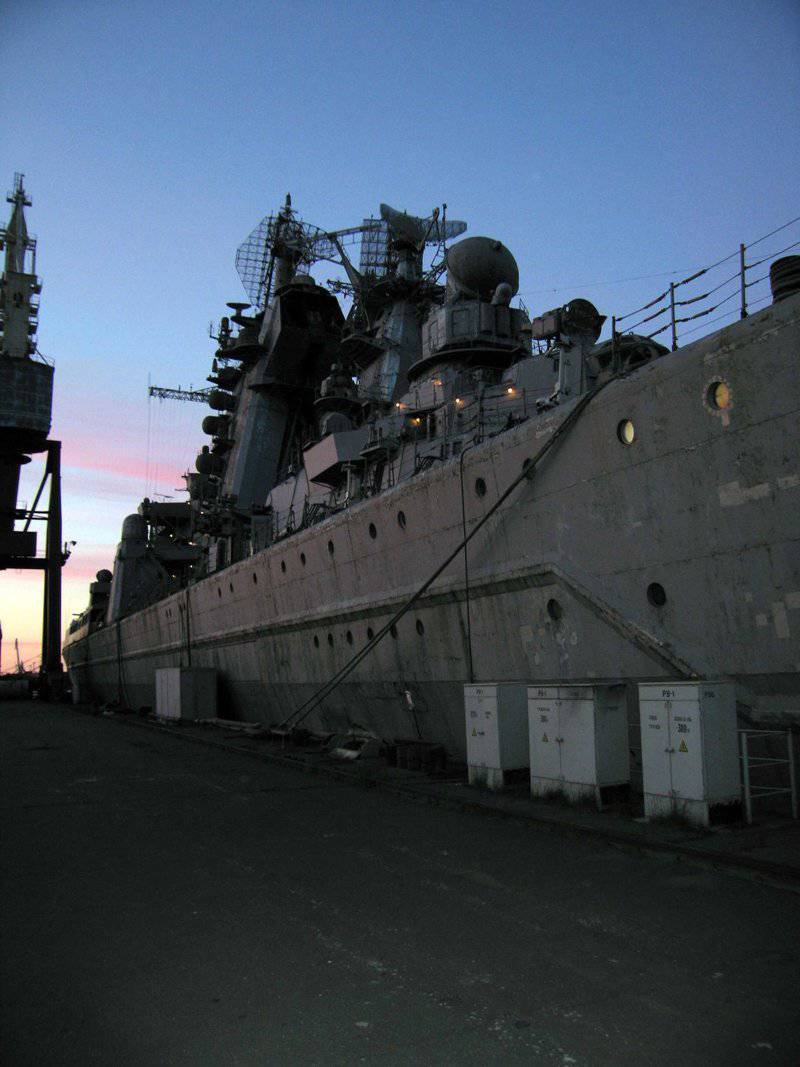
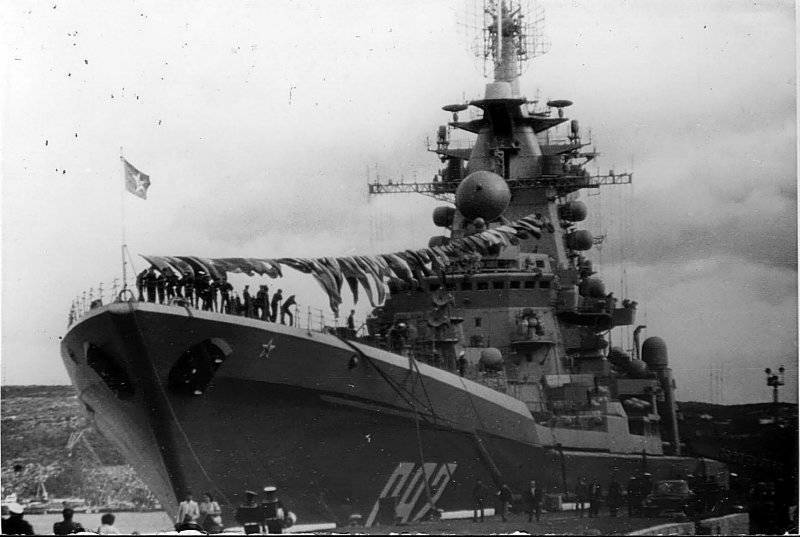
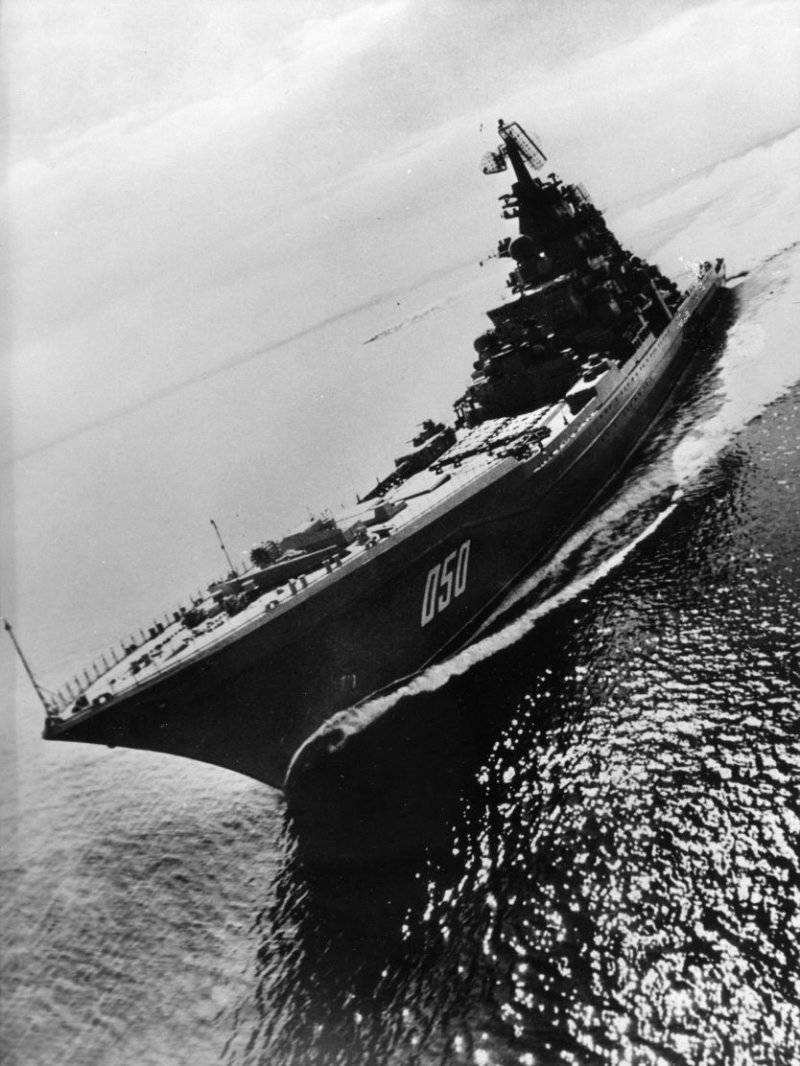
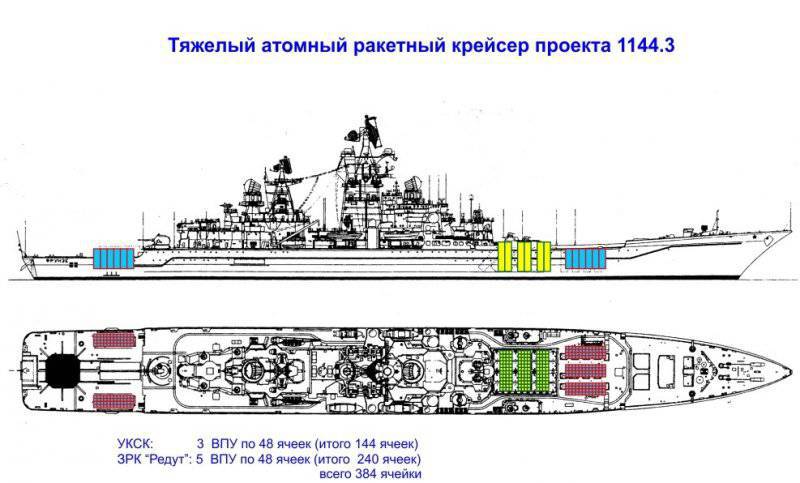
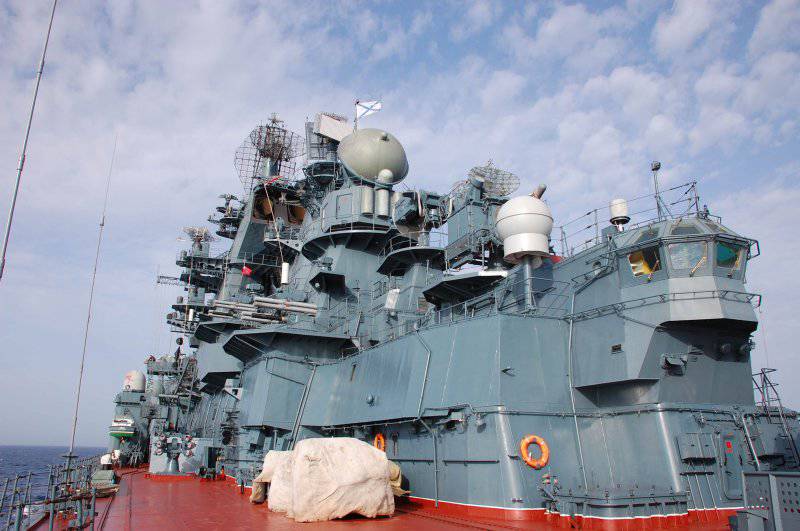
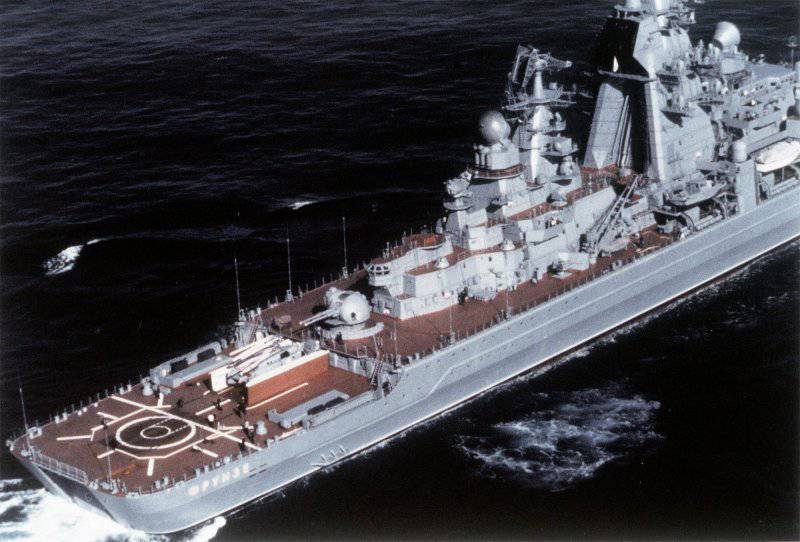
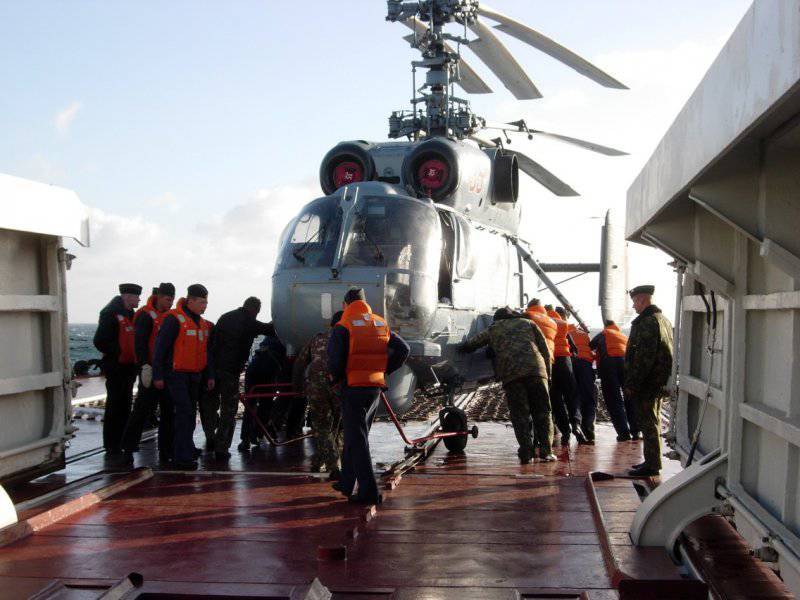
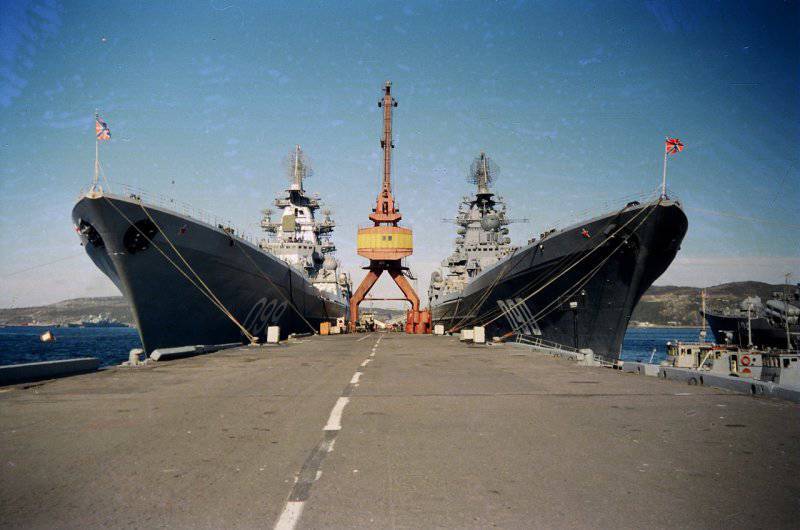
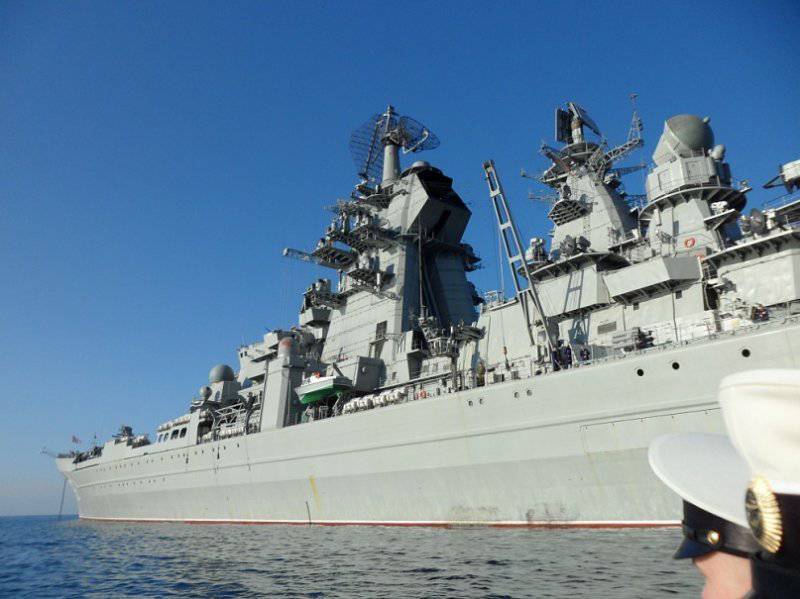
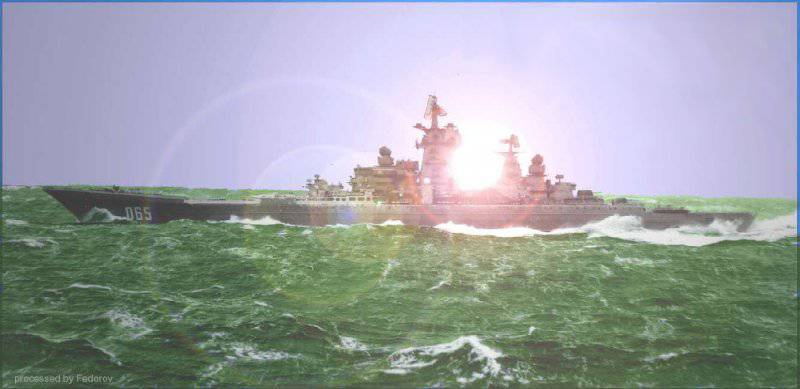
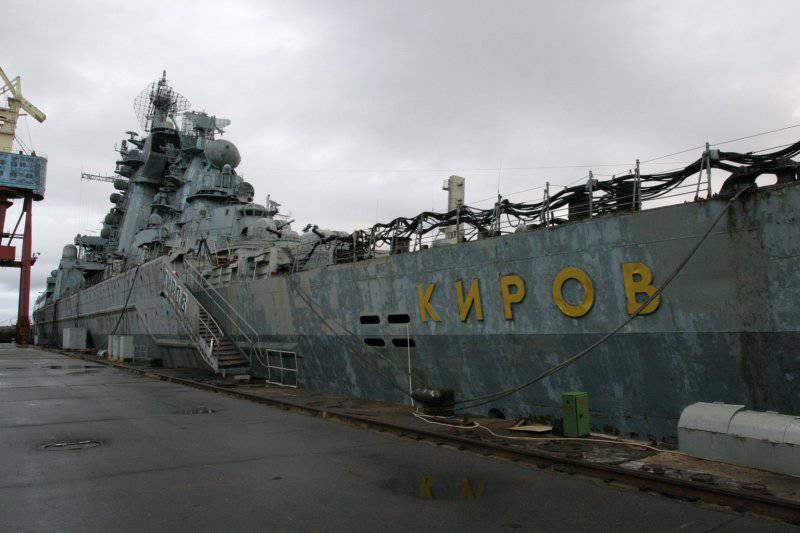
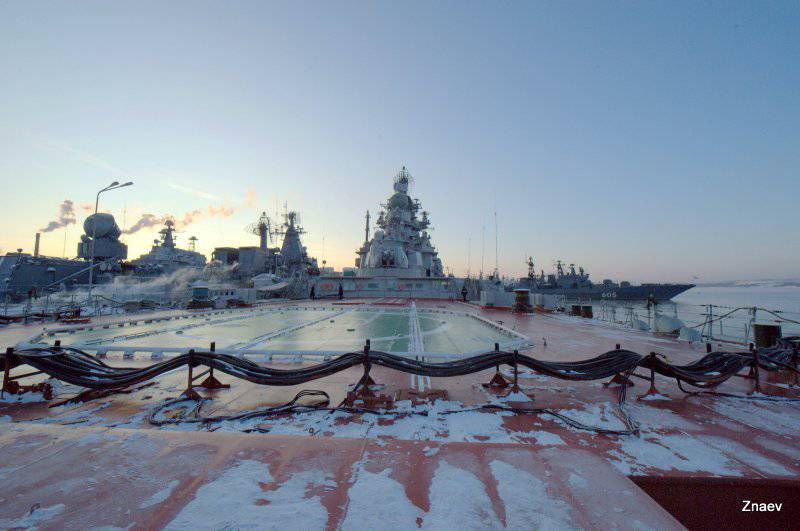
Information